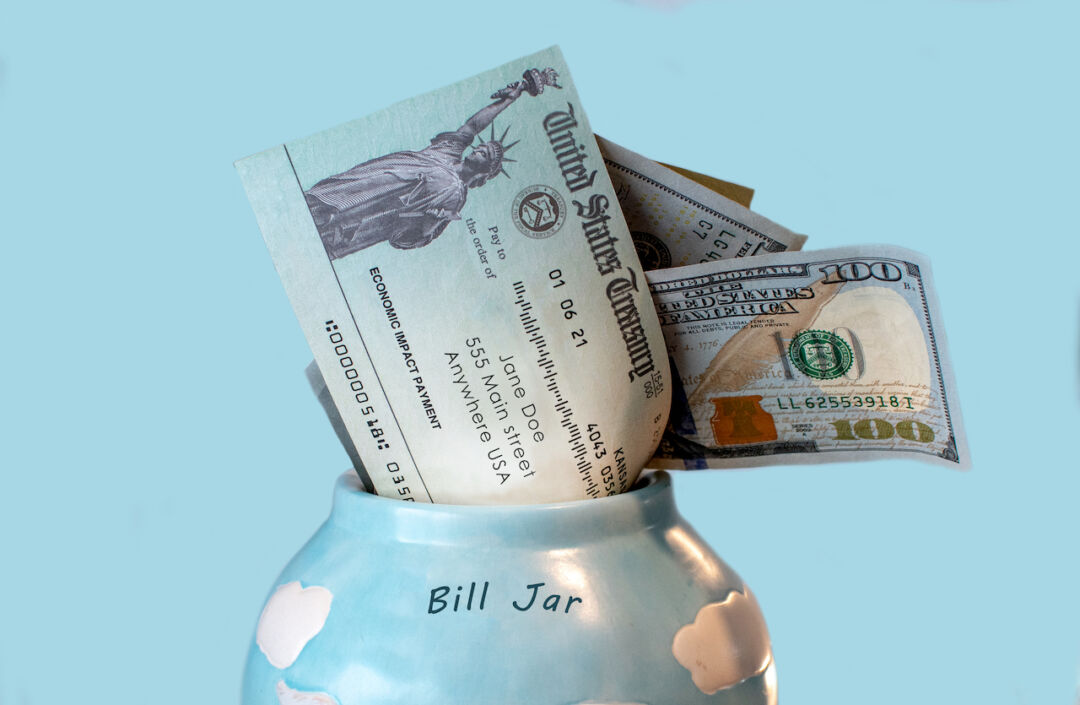Fostering academic research on U.S. economic impact payments that goes beyond the marginal propensity to consume

Direct government payments to individuals are now a standard part of U.S. fiscal policymakers’ recession-fighting toolkit. Three rounds of so-called economic impact payments from the federal government have been paid out since the onset of the coronavirus pandemic and the subsequent recession set in, with the most recent round concluding at the end of 2021. These payments built off similar payments made in several earlier periods of economic weakness, including the “tax rebates” of 2001 and 2008.
In legislating direct payments to individuals, U.S. policymakers generally have had two goals in mind: first, boosting the macroeconomy by stimulating aggregate demand and, second, mitigating recession-related harm to individuals. Many academic papers have studied the effects of these economic impact payments and earlier rounds of such payments. Most of this research has been aimed at estimating the spending response, also known as the marginal propensity to consume out of the payments.
There are a number of new studies examining the spending response to the coronavirus economic impact payments. One (among many) of these studies is “Household Spending Responses to the Economic Impact Payments of 2020: Evidence from the Consumer Expenditure Survey,” by Jonathan Parker at the Massachusetts Institute of Technology and his co-authors. Another is “Heterogeneity in the Marginal Propensity to Consume: Evidence from Covid-19 Stimulus Payments,” by Federal Reserve Bank of Chicago economists Ezra Karger and Aastha Rajan. And a third is “Income, Liquidity, and the Consumption Response to the 2020 Economic Stimulus Payments,” by Scott R. Baker and his co-authors at the Becker Friedman Institute for Economics at the University of Chicago.
These three studies look at the initial months following the payout of economic impact payments and estimate marginal propensities to consume out of nondurable goods that range from 0.1 to 0.5, implying that households put between 10 cents and 50 cents of every dollar they received toward purchases of nondurable goods. This research has informed us generally about how the spending of the average household responds when it receives an infusion of cash and points to higher propensities for households with low levels of liquid assets.
In a recession-fighting context, these research results are helpful because they speak to the stimulus impact of the measures—the boost to aggregate spending. This aggregate response reflects not only the spending directly spurred by the receipt of these payments but also additional outlays arising because new spending produces more income for those producing the goods and services produced, or the so-called multiplier effect. Having estimates of the marginal propensity to consume and multiplier effects is crucial for assessing how a fiscal package with direct payments to individuals and households will affect the aggregate economy and also for thinking about how to target future payments, so they have the most effect on the overall economy.
Much less of the research on the three coronavirus-recession-linked economic impact payments and earlier rounds of such payments has focused on the more general question of how this type of countercyclical fiscal policy helps to protect households from harm that might otherwise result from a weak economy. Such harm includes the immediate hardship that might arise from the loss of jobs or incomes and the degree to which such losses create longer-term scars that put households on weaker economic and financial footing for years to come.
I am excited that the Washington Center for Equitable Growth’s 2022 Request for Proposals offers the opportunity to fund more research on these harms. One apt example of a grant that Equitable Growth has funded related research in the past is the 2019 grant to University of California, Berkeley economist Hilary Hoynes to study “The effects of employment incentives and cash transfers on parent and child outcomes: Evidence from the long-run effects of welfare reform experiments.”
A natural extension of this type of research on the marginal propensity to consume would be a consideration of the degree to which economic impact payments, as well as support from more traditional programs such as Unemployment Insurance, helped households in different parts of the income distribution smooth their consumption in the face of the massive job losses caused by the pandemic. Many households had low levels of liquid assets going into this period. Indeed, economist Neil Bhutta at the Federal Reserve Board and his co-authors find that close to half of households had insufficient financial buffers to cover their expenses were they to lose their income for 6 months, allowing for the receipt of standard Unemployment Insurance benefits.
The high degree of consumption volatility that might arise from unexpected shocks to income when households have little financial buffer has been documented to have large welfare costs. In their 2020 study, “Wealth, Race, and Consumption Smoothing of Typical Income Shocks,” Peter Ganong at the University of Chicago and his co-authors find that consumption volatility is particularly high among households with Black and Hispanic heads, who tend to have low levels of liquid wealth.
Relatedly, the question of the degree to which these measures helped households avoid food and housing insecurity is a critical one. These types of insecurity are disruptive and difficult for families in an immediate sense but can also have much longer-lasting consequences, particularly for children. UC Berkeley’s Hoynes and Diane Whitmore Schanzenbach at Northwestern University underscore, in a 2018 literature review, how food insecurity can harm the future economic prospects of children through its adverse effects on cognitive and physical development. Other studies by the two scholars and Douglas Almond at Columbia University have documented specific harms along these lines.
Housing instability also is likely to have long-run consequences for children through the resulting instability in schooling and perhaps other channels (economist John Eric Humphries at Yale University and his co-authors show that evictions can also have lasting consequences for adults via its effects on credit access). And, tellingly, the 3 percentage point drop in the child poverty rate in 2020 hints that economic impact payments and other parts of the pandemic fiscal response improved outcomes along these lines. Additional research, however, that more rigorously documents these linkages would bolster the case for deploying such measures in the next economic downturn.
The three recent rounds of economic impact payments and other fiscal support measures probably also allowed many U.S. households to avoid setbacks in their finances that might otherwise have resulted from long periods of not working during the pandemic. The scarring of household balance sheets after the Great Recession of 2007–2009 is documented in research, such as a 2018 study by Federal Reserve Board economists Lisa Dettling and Joanne Hsu, titled “A Wealthless Recovery? Asset Ownership and the Uneven Recovery from the Great Recession.” Dettling and Hsu show that 2016 levels of average working-age family wealth were more than 30 percent below 2007 levels for families in the lower two-thirds of the income distribution. Such scarring is viewed as one reason why the overall economy took so long to recover from that downturn, with the unemployment rate only returning to its pre-recession lows in early 2017.
Economists Olivier Armantier, Leo Goldman, Gizem Koşar, and Wilbert van der Klaauw at the Federal Reserve Bank of New York document that many recipients of economic impact payments reported saving their payments or using them to reduce debt. And another study by economists at JPMorgan Chase & Co. shows higher cash bank account balances since the coronavirus pandemic began. This evidence suggests that fiscal support during the pandemic may have left many households on stronger financial footing, compared with their experiences during the Great Recession. But more research is needed on the degree to which families’ balance-sheet improvements have persisted and also on whether family balances sheets have been strengthened mostly for well-off households or whether the improvements extended to the households in the lowest part of the income distribution, which traditionally have faced the most economic precarity.
In sum, more research on economic impact payments and other pandemic-related income support programs that go beyond the marginal propensity to consume would help policymakers better understand the near-term and longer-term impact of these measures on U.S. households. More research would also help them design an effective fiscal response in the next economic downturn. It is worth remembering, too, that helping individual households better weather economic fluctuations has benefits for the broader U.S. economy. It creates a stronger consumer base that can hasten economy recovery and leaves households in a better position over the longer run to participate in the labor force, invest in skills, start businesses, and otherwise boost the productive capacity of the economy.






